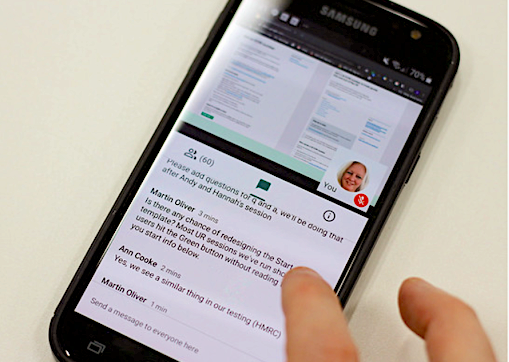
In 2019 - a pre-coronavirus (COVID-19) environment - it now feels obvious to say peer-to-peer learning in the content community, and indeed across government, looked very different. In-person meetups were popular and successful but not without their challenges. We’ve discussed how and why we decided to run an online ‘Introduction to content design’ course on FutureLearn and this post will discuss why we moved another learning format online.
Learning in person
In-person meetups are great for capability-building, sharing learning or work, and networking. But how can we best provide this learning for a geographically diverse community with limitations on learner’s time availability on a restricted budget?
To address the issue of location, we chose different cities for each meetup, including London, Birmingham and Nottingham. This, however, did not address the issue of scalability.
Physical venues have limited spaces and our events required a whole afternoon’s attendance. The time commitment was difficult for many, and moving cities made some sessions more accessible for those living and working locally but failed to solve the issue of reach. There was no way to package and share the lessons or learning after the session concluded.
Initially, we attempted a blended approach. With the in-person meetup going ahead as planned, we offered a livestream to those unable to attend. The success of the livestream was clear with participant numbers increasing. However, we quickly learned that managing both an in-person and online learning experience was a complex, hands-on process. The activities for an in-person session weren’t always translatable to online.
We also knew from user research that content designers, and those working with or interested in content design, wanted more frequent sessions. So how did we look at solving the issues of geography, attendee numbers and regularity?
Moving online
Lunch and learns are a popular and well-known format. Flexible, scalable and accessible, they can be adapted to fit most requirements. With the move online, the location of participants and hosts was no longer a restriction. Our user research said they’d like shorter, more frequent learning opportunities, in place of a full afternoon of learning. And so the idea to run 1-hour sessions over the lunch period was born.
Having decided to pilot this way of online learning, we tried a few different ways we could split the time to maximise learning goals and learner engagement. The way the session is structured does depend on the topic and how best it can be shared. We’ve had talks, demonstrations, and workshops, and generally we found the following structure strikes a balance between learning and doing
- 15-20 minute presentation
- 15-20 minute activity
- 10-15 minute Q&A
Measuring impact
So we’ve built the structure but how do we measure the impact to see if these sessions are useful for learners? Each session has a different topic so building in metrics to show the value of each topic is useful for multiple reasons.
We decided that the best way to track a change in self-reported learning would be with a pre- and post-session survey. The short surveys use identical questions created from the session’s objectives and multiple choice answers, allowing for a direct comparison.
An example of metrics from a session on pair writing shows an increase in learner confidence in clearly defining what pair writing is from 20% to 82% after the session, and an increase from 27% to 88% in learner ability to list at least 3 ways pair writing is a useful approach to creating content. Mapping metrics like this shows that the sessions are having a positive impact on attendees.
| Objective | Before | After |
| Do you understand what pair writing is?
Yes, I can clearly define what pair writing is. Yes, I have a basic understanding of what pair writing is. Somewhat, I have an understanding of what pair writing is. No, I do not know or understand what pair writing is. |
20% 47%
27% 7% |
82% 18%
0% 0% |
| Do you know why pair writing is a useful approach to creating content?
Yes, I can list 3 (or more) ways why pair writing is a useful approach to creating content. Somewhat, I have an idea of why pair writing is a useful approach to creating content. No I do not understand what pair writing is a useful approach to creating content. |
27% 67%
7% |
88% 12%
0% |
Making the move online has also meant we’re able to open up to a larger audience, with attendee numbers swelling from a maximum of 50 in person to double or triple, with 158 at our most recent lunch and learn on alt text.
Get involved
Hosting a lunch and learn is simple and we can guide you through the process. If you’d like to learn more about sharing your work, have a look at our top tips for running a lunch and learn or send us an email.
We’d also like to give a special shout-out to our previous presenters and everyone who has made our lunch and learns possible.